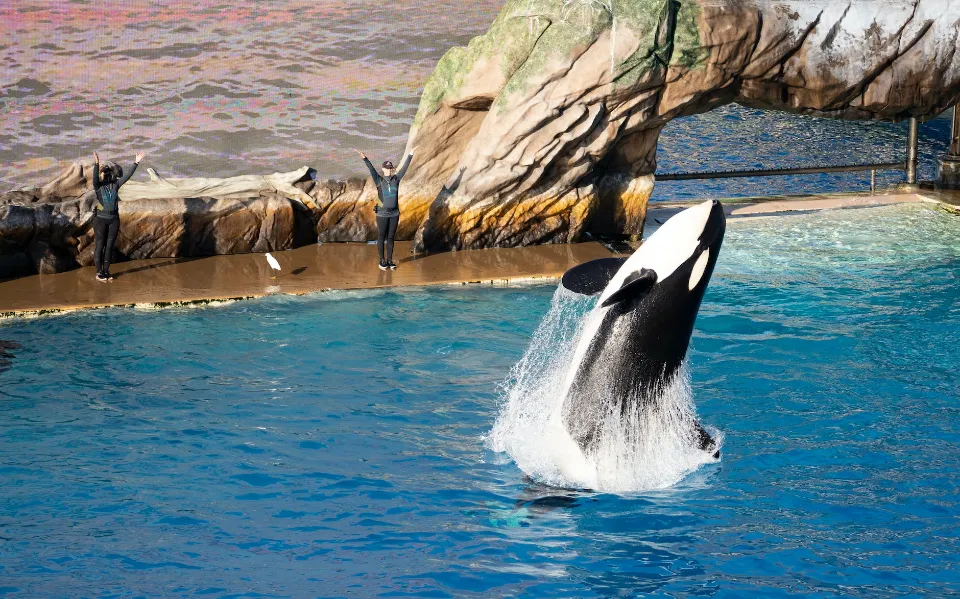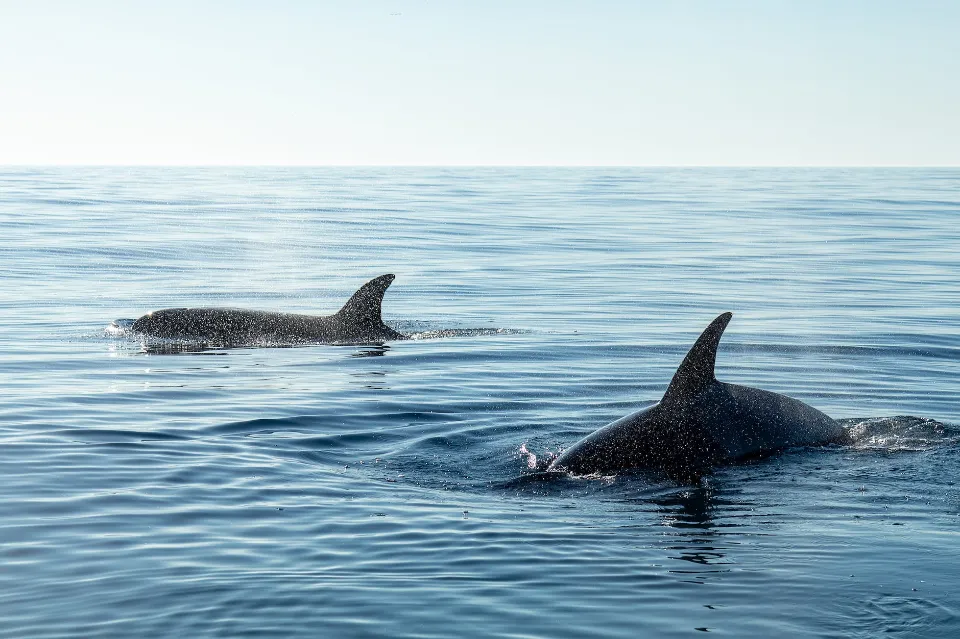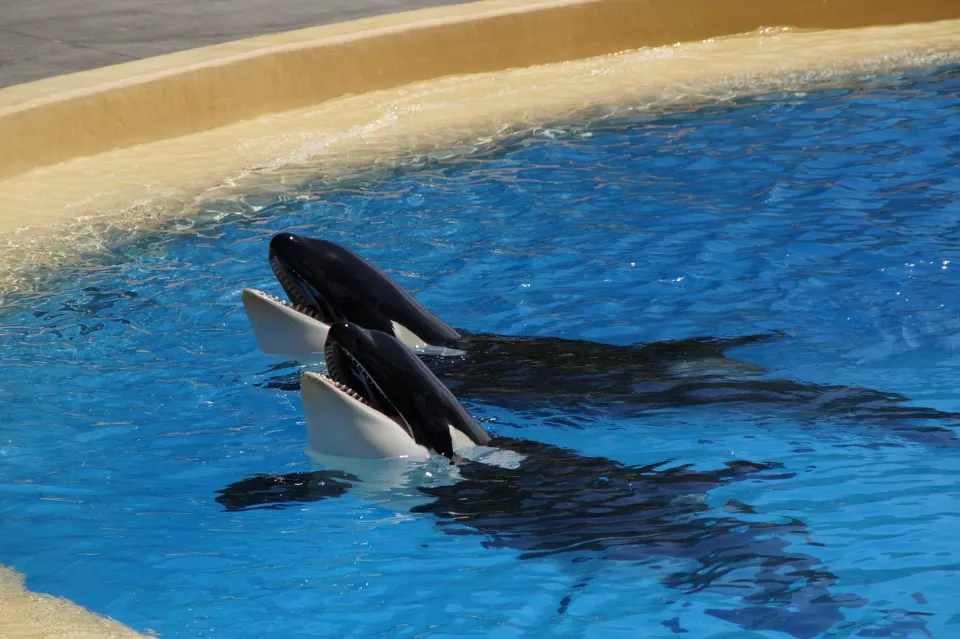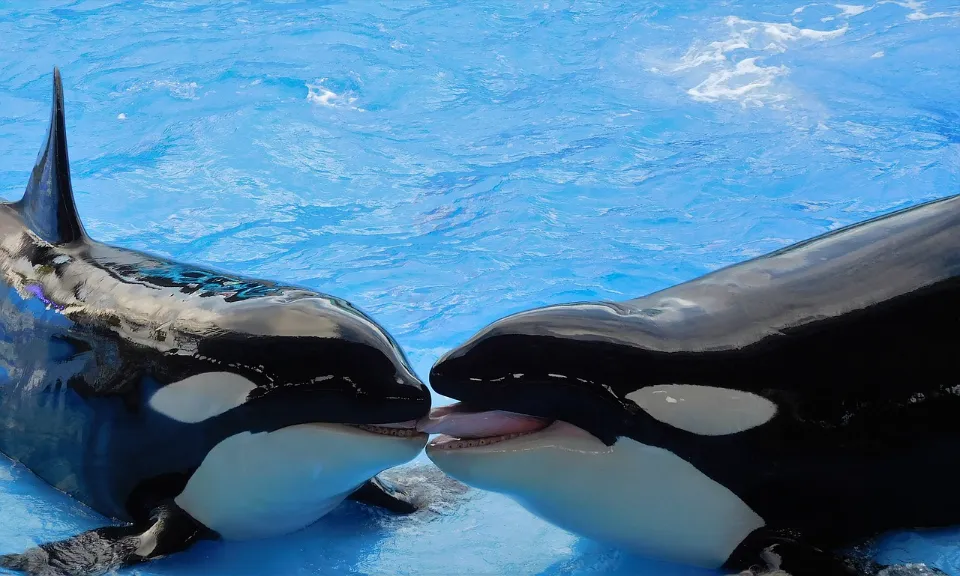
There is a direct relationship between water clarity and orca survival because the survival of orca depend on the quality of water.
Orcas can see their prey, communicate with one another, and avoid predators in clear water. Murky water can lead to orcas becoming stranded on beaches, getting caught in fishing nets, and being hit by boats.
Water Clarity Vs Orca Survival: Overview
| Water Clarity | Orca Survival |
|---|---|
| High | High |
| Medium | Medium |
| Low | Low |
| Unclear | Unclear |
Orca populations are in decline all around the world, and one of the suspected contributing factors is water clarity. Murky water can make it difficult for orcas to find food and navigate, as studies have shown that they rely on their vision more than any other sense. In addition, orcas’ bodies can accumulate pollutants from the water, which can have a negative impact on their health.

Water clarity has an impact on orcas in all habitats, not just those in the ocean. Salmon populations have been linked to declining water clarity in the Pacific Northwest, where both species of orcas reside. Salmon are a crucial component of the orca diet, so as they become harder to come by, orcas are struggling to survive.
There are many ways to increase water clarity, from lowering pollution to enhancing land management techniques. We can give orcas a chance to survive in a world that is undergoing rapid change by banding together.
What is the Relationship Between Temperature and Orca Survival?
orcas are highly sensitive to changes in water temperature. They depend on a consistent, stable climate to survive because they are so closely entwined with their surroundings. Orcas’ metabolism increases with increasing water temperature, which speeds up the rate at which they deplete their energy stores.
This can lead to malnutrition, as they cannot consume enough food to meet their high energy needs. Rising temperatures can also stress orcas out, harm their health, and hinder their ability to reproduce. It is crucial that we take action to safeguard orcas and their habitat as a result of the continued rise in global temperatures brought on by climate change.
To stabilize the climate and stop further warming, we must work to reduce our emissions of greenhouse gases. Additionally, we need to be vigilant about monitoring the health of orcas and taking steps to ensure their survival into the future.
Do Orcas Need Water Clarity?
One of the most recognizable and well-liked marine mammals are orcas, also referred to as killer whales. They are highly social animals that live in pods and are frequently seen breaching (jumping out of the water) or interacting with one another. Orcas are top predators in the ocean food chain and have no natural predators themselves.
Orcas are still largely unknown to us, despite their widespread popularity. One question that scientists are still trying to answer is whether orcas need water clarity. According to some studies, they primarily use echolocation (the use of sound waves to navigate and find prey) rather than vision as much as other dolphins and whales do.
However, other studies have shown that orcas do use their eyesight to hunt for prey and avoid predators. So far, there is no definitive answer to whether orcas need water clarity. However, it appears likely that they at least prefer clear waters because they can see their prey and any potential threats more clearly in these conditions.
Orcas may find it more difficult to locate food and stay safe in areas with murky or dark waters.
How Does Water Pollution Affect Orcas?
Orcas can be impacted by water pollution in a variety of ways. One way is by putting chemicals in the water that can harm them if they drink it. Another way is by causing algae blooms, which can deplete the oxygen in the water and make it difficult for orcas to breathe.
Additionally, the noise pollution from boats and other sources can impair strandings by obstructing stranded animals’ ability to use echolocation and other senses.
How Does Water Clarity Affect Fish?
One of the most crucial elements in determining where fish will be found in a lake or pond is the clarity of the water. Fish can find food, find predators, and migrate to new areas with ease in clear water. Fish have a harder time finding food in murky water and are more susceptible to predators.
They therefore frequently gather in locations with more crystal-clear water.

What is the Relationship Between Temp and Orca Survival
One of the most majestic and massive marine animals is the orca whale. They rank among the most vulnerable species. There are several factors that contribute to their decline, but one of the most critical is temperature.
Whales rely on a process called upwelling to bring them food. Upwelling is when cold, deep water rises to the surface, bringing with it nutrients that support marine life. As water temperatures rise, this process slows down and can eventually stop altogether.
Less food means malnutrition, starvation, and eventually death for orcas as a result of this. Warmer temperatures make it more difficult for orcas to stay cool, in addition to affecting their ability to find food. Heat exchange is how they control their body temperature, but if the water is too warm, they can overheat and perish.
The good news is that we can support orcas by taking action to lessen our personal contribution to climate change. Because of human activity, orcas have been suffering for years, but if we band together, we can help these incredible animals before it’s too late.
What is the Direct Effect of Oxygen on Orcas
In terms of essential components for life, oxygen ranks among the top. Orcas are no different from other animals and plants in needing it to survive. The role of oxygen in an orca’s respiratory system is crucial, and their bodies have evolved to be incredibly effective at drawing oxygen from the water around them.
The oceans are becoming more acidic as a result of rising atmospheric carbon dioxide levels, which is directly affecting orcas, according to the available evidence. The pH of seawater is lowered as carbon dioxide dissolves in water and forms carbonic acid. The difficulty for animals to draw oxygen from the water is just one of the issues this causes for marine life.
Ocean acidification is already known to have a number of effects on orcas. For example, research has shown that changes in ocean chemistry are causing orca calves to be born smaller than they used to be, and with less fat reserves. Because of this, their population may eventually decline as they become more susceptible to starvation and predators.
Ocean acidification is just one of many threats that orcas face today, but we can take action to address it by lowering our greenhouse gas emissions. Before it’s too late, we all have a duty to defend these magnificent beings.
What is the Relationship Between Water Clarity and Kelp Productivity

One of the most productive ecosystems on Earth is kelp forests. They give both people and marine life a number of advantages, such as food, shelter, and oxygen. High water clarity promotes kelp growth as a lot of sunlight can reach the kelp forest floor in these environments.
Temperature, nutrients, and waves all have an impact on kelp productivity in addition to water clarity. Since it permits sunlight to reach the forest floor, water clarity is crucial for kelp growth. Without enough sunlight, kelp will not be able to photosynthesize and grow.
Kelp can reach heights of 30 meters in places where the water is very clear. Off the coast of California, the largest known giant kelp, Macrocystis pyrifera, was discovered. It measured more than 50 meters in length. Kelp requires cool waters that are rich in nutrients in order to thrive.
Nutrients are essential for plant growth and help fuel primary production (the process by which plants produce their own food). Waves are also necessary for optimal kelp growth; they help circulate nutrients and allow light to penetrate the water column.
Water Clarity Indirect Effect on Orca
One of the most beautiful and wisest animals in the world is the orca, also referred to as the killer whale. They are an essential component of the marine ecosystem and have a big impact on the health of our oceans. Unfortunately, Orca populations are declining all over the world due to a variety of threats, including water pollution.
Water clarity is one of the main issues that Orca face. Orcas have a hard time finding food and interacting with one another in murky or cloudy waters. This can lead to malnutrition and isolation, which can have a serious impact on their health and reproduction.
Additionally, polluted waters can contain harmful toxins that can accumulate in Orca bodies and cause serious health problems. The good news is that there are steps we can take to protect orca populations and increase water clarity. For example, we can reduce our dependence on fossil fuels, which release harmful pollutants into the air and eventually end up in our waterways.
Initiatives to reduce pollution already in place and repair harmed habitats are also something we can support.
Conclusion
Water clarity may be one of the factors contributing to the global decline of orca populations. Orcas use echolocation to locate their prey, which can make hunting in murky water challenging. Additionally, consuming fish from murky waters can cause pollution and other contaminants to accumulate in orcas’ bodies.
Health issues and even death may result from this. We must all contribute to keeping our waterways clean in order to protect orcas.
FAQs
What is Water Clarity and Why is It Important?
A visual representation of water quality is provided by water clarity. Numerous physical, chemical, and biological aspects of the local watershed’s natural geology and human use have an impact on it. Some waters are turbid by nature.
What Adaptations Do Orca Whales Have for Survival?
Compared to land mammals, killer whales breathe less frequently, which allows them to store a lot more heat. The killer whale’s circulatory system makes adjustments to retain or release body heat, which aids in regulating body temperature. The dorsal fin, flippers, and some of their arteries are encircled by veins.
How Does Water Clarity Affect the Ocean?
Clarity has an impact on primary production, or the production of plankton, the building blocks of the food web, by altering the amount of heat and light in the water column. These modifications spread throughout the food chain and have an impact on fish’s productivity at higher trophic levels.







